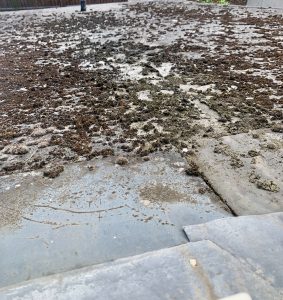Summer damage for your roof
With the unseasonal August weather leaving us all scratching our heads, you might be pleasantly surprised by the news of a heatwave this weekend. But what does this mean for your roof? With one of the wettest Augusts on record followed by a few days of actual summer weather, this could have a significant impact the longevity of your roof down the road.
You might want to be aware of some of the problems that can crop up so as not to risk a costly total roof replacement, so without further ado, here are some of the ways this summer weather can cause a problem for your roof…
Water is the enemy
With so much rain in a short amount of time followed by a quick flurry of hot weather, these are the perfect conditions for moss and mould growth. When moisture builds up within the layers of your roof, mould and moss is given freedom to grow, damaging your roof from the inside out.
Thriving in warm, wet climates in between shingles in your roof, moss can grow out onto the exteriors of your roof, making it look like you’ve got a thick green blanket over your house. Whilst this may not seem like a big deal, as well as making your roof look rather uneasy on the eye, moss is notorious for holding water. This means that your roof can become covered in concentrated damp patches that will eventually seep through and create leaks.
The problem doesn’t stop there, indeed damp patches in your house can lead to mould which can have a poor impact on your health as well as your interiors.
There are two simple and easy ways to stop the summer storms running your roof. The first option is to stick a strip of zinc across the apex of the roof, creating an alkaline liquid when it comes into contact with water, killing moss as it trickles down. Alternatively, fix a small piece of copper wire underneath your ridge to stop any moss accumulating as well as preventing growth in the first place. If you’re unsure on what to do or simply have too much to deal with on your roof, give us a call and we can sort it.
Summer can escalate rotting damage
Since roof decking is usually made of plywood, leaks from summer storms can leave your decking to bend and rot. Since the decking acts as additional support for your roof thanks to its strength, it cannot support the weight of your roof if damage becomes severe. This means that your roof is in danger of collapsing. Poor attic ventilation accompanied by summer storms and  intense heat can also have the same effect as your attic can overheat, accelerating the time taken for mould and rotting to form.
intense heat can also have the same effect as your attic can overheat, accelerating the time taken for mould and rotting to form.
Keep an eye on this, if your ceiling starts to leak that’s a pretty clear sign you have a problem, other more subtle clues include mould and mildew appearing on your walls or dark damp patches in your attic. If you spot a slight sagging or dip in your roofline from the outside then it’s worth taking a look to manage the damage.
It’s recommended that you get your roof inspected at least once a year, so once this weather has passed it’s worth getting someone out to check that all’s good.
Cracked shingles
A little known fact, the sun can cause almost as much damage as rain as with the predicted 30° heat this weekend, your roof can reach almost double this temperature. Intense heat after a cooler, wetter period can lead to your shingles drying out, making them prone to cracking and breaking when the next storm hits. Look out for this as cracking can lead to eventual roof collapse if you’re not careful.
If the confusing August weather has been a little too much for your roof, don’t leave it until it’s too late. We can accommodate to all your roofing needs so give us a shout for a free quote and consultation.
Feel free to check out our Instagram for daily updates and like us on Facebook!
